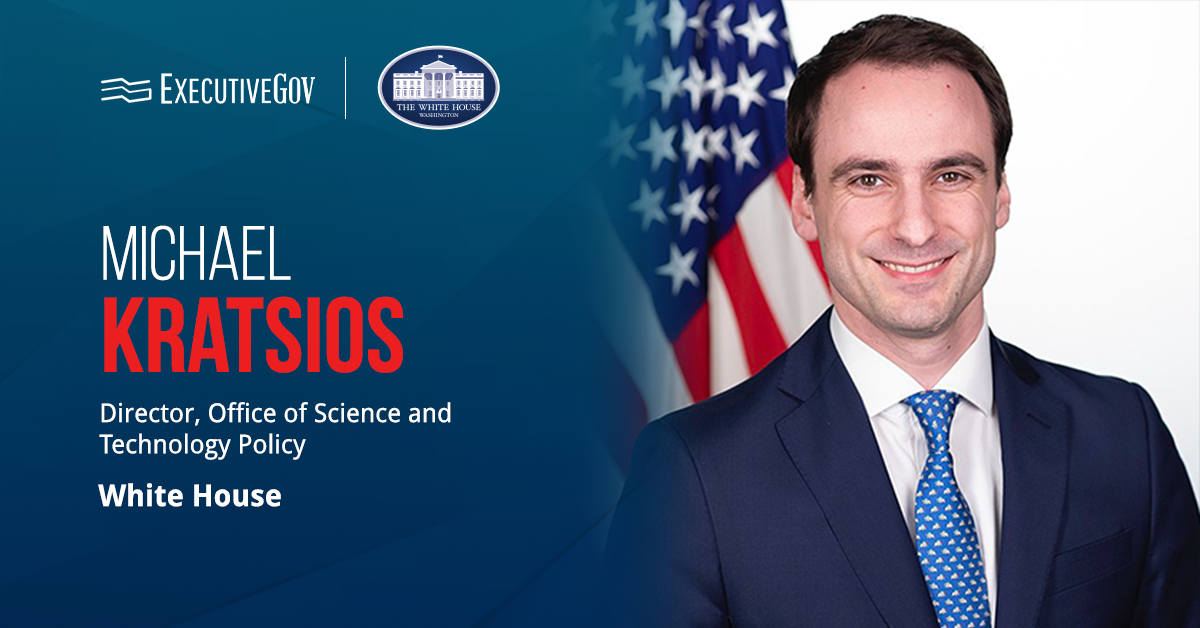Michael Kratsios, director of the White House Office of Science and Technology Policy and a two-time Wash100 awardee, has released a memorandum guiding how federal agencies should implement and incorporate “gold standard science” principles into their research activities.
In May, President Donald Trump signed an executive order that seeks to restore agency use of gold standard science to spur innovation. Under the EO, the director of OSTP should work with agency heads to release guidance for implementing gold standard science in managing their scientific activities.
“President Trump’s Gold Standard Science EO will transform the conduct and management of federal science, from research design to public communication, in order to strengthen scientific inquiry, rebuild public trust, and ensure the U.S. continues to be the global leader in rigorous, evidence-based science,” Kratsios said in a statement published Monday.
“But federal agencies are only one part of our nation’s research ecosystem. American universities, scientific journals, industry and philanthropic leaders all have a crucial role in improving the overall quality of research, and we encourage this executive action to serve as a model for the entire scientific enterprise,” he added.
Table of Contents
What Are the Tenets of Gold Standard Science?
The memo defines the nine key tenets of gold standard science and describes agency responsibilities regarding each tenet. The EO defines gold standard science as science conducted in a way that is reproducible; transparent; communicative of error and uncertainty; collaborative and interdisciplinary; skeptical of its findings and assumptions; structured for falsifiability of hypotheses; subject to unbiased peer review; accepting of negative results as positive outcomes; and without conflicts of interest.
To advance reproducible and replicable science, for instance, agencies should prioritize disciplined scientific methods and experimental design; encourage depositing raw data and code that contributes to research outcomes in publicly accessible repositories; address barriers by promoting training, shared infrastructure and incentives for open science practices; and establish grant programs, awards and other incentives to encourage researchers and institutions to prioritize both reproducibility and replicability.
Gold Standard Science Implementation Plan
Within 60 days, agencies should submit to OSTP and post on their websites a report outlining their plans to implement gold standard science.
The implementation plans should include descriptions of how the agency is addressing each of the tenets of gold standard science; discussion of how technology will be leveraged for implementing gold standard science; development of standardized metrics and evaluation mechanisms to evaluate adherence to these tenets and their impact on scientific quality; and plans for providing training and resources to ensure that agency employees understand and adhere to the tenets.
Exploring Use of Artificial Intelligence
The OSTP document directs agencies to explore the use of AI and other advanced technologies to implement Gold Standard Science, including the use of automated tools to validate reproducible protocols, standardize transparent data reporting and detect biases in peer and merit review.
“By integrating these technologies into research frameworks, agencies can optimize compliance efficiency, reduce administrative overhead, and enable researchers to focus on discovery, thereby enhancing the credibility, rigor, and impact of scientific outcomes,” Kratsios wrote in the memo.
Initial agency reports are due Aug. 22, and future annual reports are due to OSTP by Sept. 1 of each year starting in 2026.





